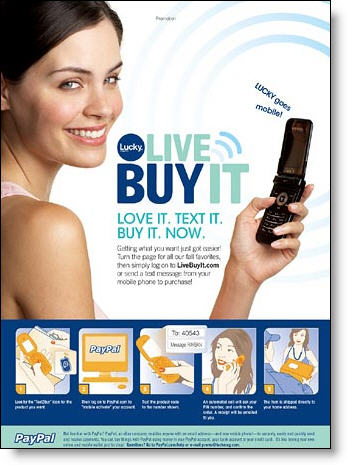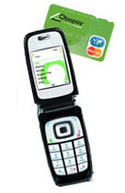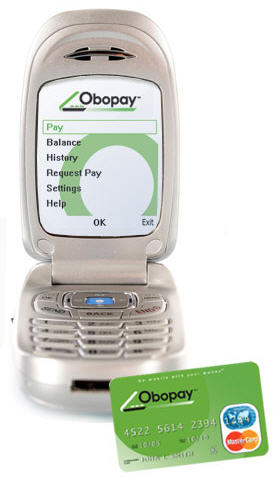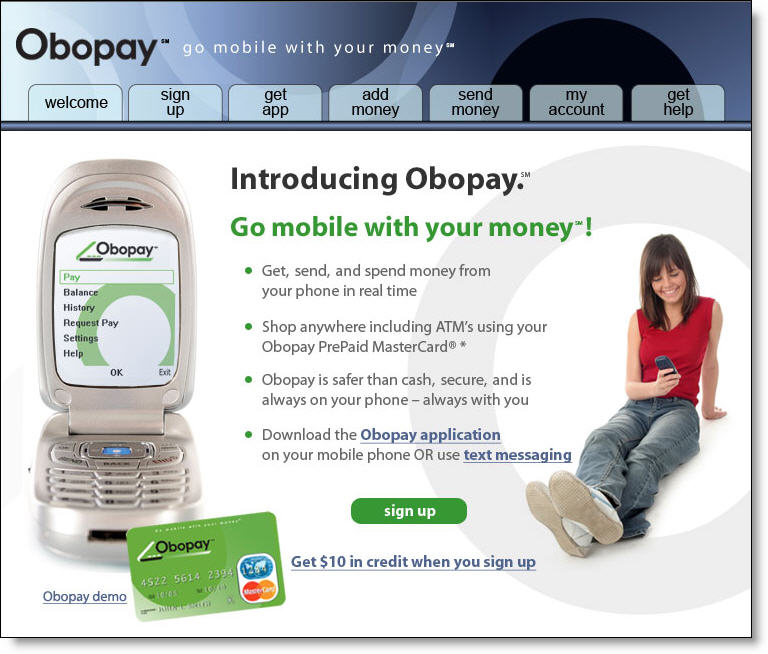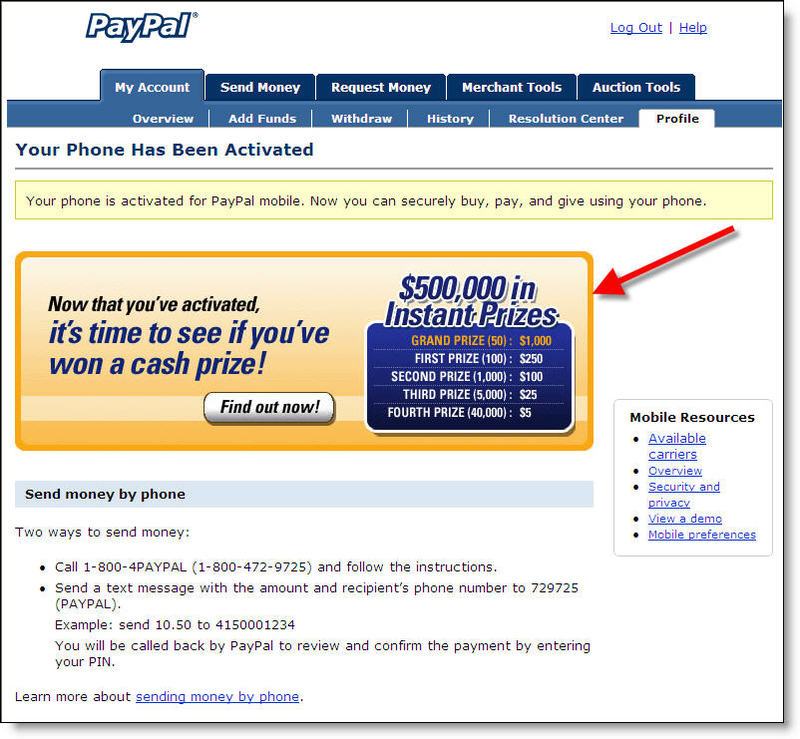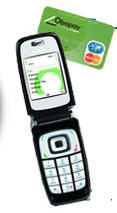 An unpublished study being completed by Market Platform Dynamics says there’s little data to support assertions that mobile payments will become the payment vehicle of choice for the people under the age of 40 called Gen X and Gen Y. According to the company’s multi-year research, 62 percent of respondents said they think using cell phones as payment vehicles is unnecessary, and 38 percent said they don’t use their cell phones enough to make it worthwhile. The good news: People born since 1977—Gen Y’ers—like the idea better than their Gen X elders. Last week, founder Market Platform founder David S. Evans spoke with NetBanker about his findings, and their implications.
An unpublished study being completed by Market Platform Dynamics says there’s little data to support assertions that mobile payments will become the payment vehicle of choice for the people under the age of 40 called Gen X and Gen Y. According to the company’s multi-year research, 62 percent of respondents said they think using cell phones as payment vehicles is unnecessary, and 38 percent said they don’t use their cell phones enough to make it worthwhile. The good news: People born since 1977—Gen Y’ers—like the idea better than their Gen X elders. Last week, founder Market Platform founder David S. Evans spoke with NetBanker about his findings, and their implications.
NB: Tell us about the difference in attitude between the 16-to-19-year olds and older people.
Evans: The very young people indicated they’re more interested in using their mobile phones as a payment device, and the very old people—real geezers in their late-30s to early-40s—are less enthusiastic. Everyone else is about the same [as the geezers]. But still, even 50 percent of the real kids say ‘not really interested.’
NB: Most of the enthusiasm for mobile payments is based on the idea that these children are going to be flocking to use their cell phones like they do in Asia, and that therefore, mobile payments is not only the wave of the future, but also the demise of the credit card and the credit card brand as we know it.
Evans: Let’s be careful about a couple of things there. First of all, and despite the survey results, I’m still bullish on mobile phones eventually becoming payment devices. The thing you need to keep in mind is that people can’t really imagine what it is like to use one of these things until you actually present them with the goods. So, despite these numbers, I’m still bullish on mobile phones.
Number two, you say ‘Displace the credit card industry.’ There are two issues: One, whether the mobile phone is going to become the new form factor—just a physical thing that people use instead of a magnetic stripe card. The other question is whether the possibility of the mobile phone carriers being in the loop has an implication for the card system.
Those are two different questions. For the second question: What is currently happening in the U.S. is that the mobile carriers are not expressing, at the moment, great enthusiasm to be card systems. But having said that, it’s ultimately the mobile operator that has the relationship with the customer, so the mobile operators are being injected into the payment eco-system, and it’s possible that that could have some implications for the card associations. But it’s pretty complex.
NB: It seems to me that the real impetus here is going to be the first question—will the form factor impel the cell phone operators into the loop.
Evans: That’s correct: If consumers are interested in using their mobile phones as payment devices, then you can be sure that ultimately, the mobile phone operators are going to want to figure out some way to get a piece of that action.
NB: Based on your research so far, what are those indications?
Evans: Based on what’s happening in Asia, and looking at the U.S., our sense is that in the long run, and despite the lack of enthusiasm that we get in the survey, the mobile phone has many advantages as a form factor, because of the possibility of its being a contactless device with a graphical user interface—able to do lots of different stuff and being ubiquitous as well. So it’s a natural thing for them to become an important—if not the—form factor for paying for things.
NB: So I take it that your ultimate conclusion here is that this will happen, but it will take longer than some enthusiasts may be suggesting.
Evans: That’s correct, and I think the survey results indicate that people aren’t going to flock to this thing just because it’s new, and whoever is trying to push this form factor on consumers, or on merchants, is going to have to present a solid value proposition to the consumers. Consumers will have to be able to do something with this device that they can’t do with their current, easy-to-use magnetic stripe card. It underscores the fact that the introduction of a new technology in the payment card space is always an uphill battle.
NB: So first of all, the way to accelerate adoption will be to offer something the cards don’t do, aside from being able to use your cell phone as a gizmo; and number two, the people who want to push adoption will have to be willing to buy market share by accepting lower margins today.
Evans: I don’t necessarily agree with that. If you can come up with a clever, valuable thing on the mobile phone that is of interest to consumers, consumers will be interested in it. And that can happen without necessarily taking a hit on margins.
NB: Would that include rewards programs?
Evans: It may turn out that mobile phones make it easier for card issuers and merchant participants to have rewards programs, because you have a graphical interface on the phones. That implies that you can basically beam rewards to people. There are more clever things you can do with a computer than you can do on a mag stripe card, or even a contactless chip card. So that’s one of the value propositions that one can start thinking about with mobile phones: Are there ways to turn the mobile phone into something that’s valuable to both consumers and merchants?
NB: And what do you think?
Evans: Once you start moving towards a smart computing device with a screen, there is an enormous amount of things, including rewards, that people in this business can start thinking about—things we can’t even imagine. The mobile phone is most interesting because it truly is a computer. And in other parts of the information technology world, we’ve seen that once you start talking about software platforms for computers, developers come up with all sorts of ideas about how to use that computing power. That’s the true excitement of the mobile phone.
NB: So the payments mechanism will just be included in the phone, and over time, people will use it more.
Evans: We have to be careful about one thing, though: When you think about people using mobile phones, we’re talking about contactless, and therefore the adoption of mobile phones as a payment device is tied to the adoption of contactless at the point of sale by merchants.
NB: Which is the chicken-and-egg issue.
Evans: It’s a chicken-and-egg issue. There are all these contactless cards out there now, but there aren’t a lot of merchants that accept them. But if consumers wind up really liking the idea of contactless mobile phones as a payment device, and people start getting those sorts of phones, it could propel adoption of contactless. Having said that, if I gave you a mobile phone with a contactless chip today that was an incredibly powerful payment device, you could use it at your local McDonald’s to buy a Big Mac, but not much else.
NB: Everything you’ve said is contingent on a screen. What does your research tell you about what people say will be the generation after cell phones—a chip embedded in a wristwatch or token?
Evans: I don’t think that’s after mobile phones—I think it’s pre-mobile phones. One of the things that came out of our research is that our respondents exhibited utter lack of enthusiasm for fob-like devices.
NB: Yet most people have predicted that that is the next generation after this, and that’s what’s going to atomize the brand value.
Evans: The Gen Y people indicated slightly more interest in fobs than Gen X, but no one expresses a lot of interest in fobs.
NB: I infer from that that some of the anxieties that I’ve heard about the next generation of payment devices atomizing brand value is, at a minimum, overdone.
Evans: Yes. I don’t think there’s any reason to think that mobile phones are going to atomize the brand. I think that the major implication i
s that in the long run—five to ten years—mobile phone carriers are potentially important players in the eco-system, and whether they become allies of the card systems, or whether they think about becoming alternatives, or allying with someone else, remains to be seen. But it’s certainly not going to atomize the industry—it’s just going to inject another set of interested parties into the business.
NB: What’s happened in Japan [where DoCoMo already operates a thriving mobile payments system] could be done in this country just as easily. Do you think that could be the disruptive element that could marginalize cards?
Evans: It’s possible, but there are very important differences between Japan and the U.S. Japan has a poorly developed card industry and not a lot of interest in the use of credit cards. It has enormous interest in the use of mobile phones. DoCoMo got established in Japan mainly because people don’t have personal computers, and there is an extensive broadband penetration, so Japanese consumers standardize all their Internet activities on mobile phones. And you have companies that are able to push the mobile phone manufacturers around and tell them what to do. When you come to the U.S., you have totally different sorts of operators and a very, very well-developed card industry, with plenty of muscle behind it. So I think the [U.S.] mobile operators are an interesting set of entities that, as the mobile phone becomes a more important payment device and gets injected into the [U.S.] payments eco-system, could alter that eco-system. It could possibly take on a more significant role. But I think that’s a long time coming, and certainly not imminent. It remains to be seen whether that is even a plausible outcome in the U.S.
(Contact: Market Platform Dynamics, David Evans, 617-266-6839)
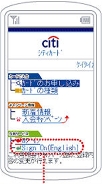 In a multi-page look at mobile banking (here), BankRate.com reporter Laura Bruce quotes Citibank's Rob Julavits as saying the bank will be:
In a multi-page look at mobile banking (here), BankRate.com reporter Laura Bruce quotes Citibank's Rob Julavits as saying the bank will be: 